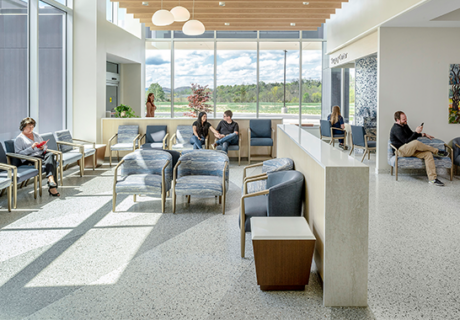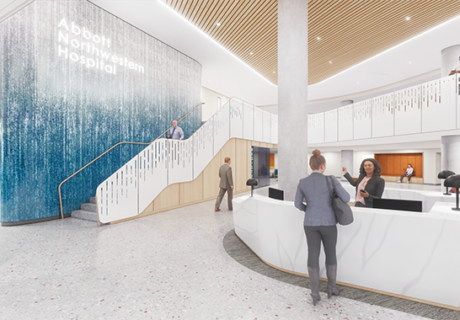PHOTO TOUR: Ron J. Anderson, MD Clinic
The new, five-story Ron J. Anderson, MD Clinic, located in Dallas, opened in January 2017 as part of the Parkland Health & Hospital System campus, which also includes the Women & Infants Specialty Health (WISH) Clinic. The 227,420-square-foot outpatient medical specialties clinic is named for the late Ron J. Anderson, MD, president and CEO of Parkland for 29 years, who was a national spokesperson for public health issues and champion for the poor and medically underserved.
The Anderson Clinic interiors were designed and built with a welcoming, comforting ethos to ensure that patients and their family members would benefit from the design, creating a healing environment. The design teams for the interiors included Holly Ragan, Jim Johnson, Alan Black, John DuBard, Mary Butler and Shayan Baradaran from FKP (Houston); Hoang Dang, Laurel Stone, Tiffany Woodson, Yen Ong and Christine Robbins-Elrod of 5G Studio Collaborative (Dallas).
The design team’s evidence-based approach included a combination of research, project evaluation and assessment of data on the patient experience, along with analysis of the needs of Dallas County patients. The architects met with patient liaisons and Parkland staff members as a part of the fact-gathering that informed their approach to the interiors.
The design team was assigned the work of planning spaces for diverse specialty clinic medical services relocated to the Anderson Clinic, with interiors that would connect patients efficiently with the service, withstand high levels of traffic, and support clinical care in a patient-friendly environment.
One of the main design goals was to locate patient-centric spaces along the perimeter of the building to provide patients with views and natural light. Clinic flexibility, both for current daily needs as well as for future growth, was also key. To achieve this, team leaders worked with the client to design a universal patient exam room equipped with basic clinical needs that also is able to flex in size or move, as needed. The clinic spaces were also designed as neighborhoods or pods, that could be brought online or taken offline according to clinic daily needs and patient demand.
Even though the building was new construction, the healthcare campus is mature which made for some challenges, including the development of interiors with efficient flow of traffic. Two entry points on two levels bring patients into the clinic. Another challenge was the need for balancing unity and contrast. Care was taken in the selection of color, texture and artwork among floors and facilities for a cohesive yet distinctive balance among floors.
“The Anderson Clinic had to be a unique space, yet also fit with the context and established material palette of the overall campus,” says Laurel Stone, AIA, NCARB, LEED AP BD+C and principal at 5G. “Our design of the connection among buildings incorporated color and spatial elements to make a smooth yet definitive transition into the building from the exterior. This was so important to achieve, with so many services having moved to the Anderson Clinic from other buildings at Parkland.”















